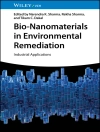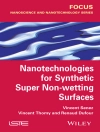Low-dimensional solids are of fundamental interest in materials science due to their anisotropic properties. Written not only for experts in the field, this book explains the important concepts behind their physics and surveys the most interesting one-dimensional systems and discusses their present and emerging applications in molecular scale electronics. Chemists, polymer and materials scientists as well as students will find this book a very readable introduction to the solid-state physics of electronic materials.
In this completely revised and expanded third edition the authors also cover graphene as one of the most important research topics in the field of low dimensional materials for electronic applications. In addition, the topics of nanotubes and nanoribbons are widely enlarged to reflect the research advances of the last years.
表中的内容
About the Authors XI
Preface to the Third Edition XIII
Preface to the Second Edition XV
Preface to the First Edition XVII
1 Introduction 1
1.1 Dimensionality 1
1.2 Approaching One-Dimensionality from Outside and from Inside 2
1.3 Dimensionality of Carbon Solids 7
1.3.1 Three-Dimensional Carbon: Diamond 7
1.3.2 Two-Dimensional Carbon: Graphite 8
1.3.3 One-Dimensional Carbon: Cumulene, Polycarbyne, Polyene 9
1.3.4 Zero-Dimensional Carbon: Fullerene 11
1.3.5 What about Something in between? 12
1.4 Peculiarities of One-Dimensional Systems 13
References 17
2 One-Dimensional Substances 19
2.1 A15 Compounds 23
2.2 Krogmann Salts 27
2.3 Alchemists’ Gold 29
2.4 Bechgaard Salts and Other Charge Transfer Compounds 31
2.5 Polysulfurnitride 34
2.6 Phthalocyanines and Other Macrocycles 36
2.7 Transition Metal Chalcogenides and Halides 38
2.8 Conducting Polymers 40
2.9 Halogen-Bridged Mixed-Valence Transition Metal Complexes 44
2.10 Miscellaneous 45
2.10.1 Poly-deckers 45
2.10.2 Polycarbenes 46
2.11 Isolated Nanowires 46
2.11.1 Templates and Filled Pores 46
2.11.2 Asymmetric Growth Using Catalysts 48
2.11.3 Carbon Nanotubes 49
2.11.4 Inorganic Semiconductor Quantum Wires 51
2.11.5 Metal Nanowires 52
2.12 Summary 53
References 53
3 One-Dimensional Solid-State Physics 57
3.1 Crystal Lattice and Translation Symmetry 57
3.1.1 Classifying the Lattice 59
3.1.2 Using a Coordinate System 62
3.1.3 The One-Dimensional Lattice 63
3.1.4 Carbon Nanotubes as One-Dimensional Lattices 65
3.2 Reciprocal Lattice, Reciprocal Space 67
3.2.1 Describing Objects Using Momentum and Energy 67
3.2.2 Constructing the Reciprocal Lattice 68
3.2.3 Applying This to One Dimension 69
3.3 The Dynamic Crystal and Dispersion Relations 71
3.3.1 Crystal Vibrations and Phonons 71
3.3.2 Quantum Considerations with Phonons 79
3.3.3 Counting Phonons 81
3.4 Phonons and Electrons Are Different 83
3.4.1 Electron Waves 84
3.4.2 Electron Statistics 85
3.4.3 The Fermi Surface 86
3.4.4 The Free Electron Model 87
3.4.5 Nearly Free Electron Model; Energy Bands, Energy Gap, and Density of States 91
3.4.6 The Molecular Orbital Approach 97
3.4.7 Returning to Carbon Nanotubes 98
3.5 Summary 102
References 102
4 Electron–Phonon Coupling and the Peierls Transition 105
4.1 The Peierls Distortion 107
4.2 Phonon Softening and the Kohn Anomaly 111
4.3 Fermi Surface Warping 112
4.4 Beyond Electron–Phonon Coupling 113
References 114
5 Conducting Polymers: Solitons and Polarons 117
5.1 General Remarks 117
5.2 Conjugated Double Bonds 119
5.3 A Molecular Picture 122
5.3.1 Bonding and Antibonding States 123
5.3.2 The Polyenes 123
5.3.3 Translating to Bloch’s Theorem 128
5.4 Conjugational Defects 132
5.5 Solitons 136
5.6 Generation of Solitons 144
5.7 Nondegenerate Ground-State Polymers: Polarons 146
5.8 Fractional Charges 151
5.9 Soliton Lifetime 153
References 156
6 Conducting Polymers: Conductivity 159
6.1 General Remarks on Conductivity 159
6.2 Measuring Conductivities 164
6.2.1 Simple Conductivity 164
6.2.2 Conductivity in a Magnetic Field 168
6.2.3 Conductivity of Small Particles 169
6.2.4 Conductivity of High-Impedance Samples 171
6.2.5 Conductivity Measurements without Contacts 171
6.2.6 Thermoelectric Power – the Seebeck Effect 172
6.3 Conductivity in One Dimension: Localization 175
6.4 Conductivity and Solitons 178
6.5 Experimental Data 182
6.6 Hopping Conductivity: Variable Range Hopping vs. Fluctuation-Assisted Tunneling 186
6.7 Conductivity of Highly Conducting Polymers 195
6.8 Magnetoresistance 197
References 202
7 Superconductivity 209
7.1 Basic Phenomena 209
7.2 Measuring Superconductivity 216
7.3 Applications of Superconductivity 218
7.4 Superconductivity and Dimensionality 219
7.5 Organic Superconductors 220
7.5.1 One-Dimensional Organic Superconductors 222
7.5.2 Two-Dimensional Organic Superconductors 225
7.5.3 Three-Dimensional Organic Superconductors 227
7.6 Future Prospects 229
References 231
8 Charge Density Waves 235
8.1 Introduction 235
8.2 Coulomb Interaction, 4k F Charge Density Waves, Spin Peierls Waves, Spin Density Waves 236
8.3 Phonon Dispersion Relation, Phase and Amplitude Mode in Charge Density Wave Excitations 240
8.4 Electronic Structure, Peierls–Fröhlich Mechanism of Superconductivity 242
8.5 Pinning, Commensurability, Solitons 243
8.6 Field-Induced Spin Density Waves and the Quantized Hall Effect 248
References 250
9 Molecular-Scale Electronics 253
9.1 Miniaturization 253
9.2 Information in Molecular Electronics 257
9.3 Early and Radical Concepts 258
9.3.1 Soliton Switching 258
9.3.2 Molecular Rectifiers 261
9.3.3 Molecular Shift Register 262
9.3.4 Molecular Cellular Automata 264
9.4 Carbon Nanotubes 265
References 269
10 Molecular Materials for Electronics 271
10.1 Introduction 271
10.2 Switching Molecular Devices 272
10.2.1 Photoabsorption Switching 272
10.2.2 Rectifying Langmuir–Blodgett Layers 274
10.3 Organic Light-Emitting Devices 277
10.3.1 Fundamentals of OLEDs 277
10.3.2 Materials for OLEDs 284
10.3.3 Device Designs for OLEDs 284
10.3.4 Performance and Outlooks 285
10.3.5 Field-Induced Organic Emitters 286
10.3.6 Organic Lasers and Organic Light-Emitting Transistors 289
10.4 Solar Cells 294
10.5 Organic Field Effect Transistors 298
10.6 Organic Thermoelectrics 300
10.7 Summary 302
References 303
11 Even More Applications 307
11.1 Introduction 307
11.2 Superconductivity and High Conductivity 307
11.3 Electromagnetic Shielding 308
11.4 Field Smoothening in Cables 308
11.5 Capacitors 309
11.6 Through-Hole Electroplating 310
11.7 Loudspeakers 311
11.8 Antistatic Protective Bags 311
11.9 Other Electrostatic Dissipation Applications 313
11.10 Conducting Polymers for Welding of Plastics 314
11.11 Polymer Batteries 314
11.12 Electrochemical Polymer Actuators 316
11.13 Electrochromic Displays, Smart Windows, and Transparent Conducting Films 317
11.14 Electrochemical Sensors 319
11.15 Gas-Separating Membranes 320
11.16 Hydrogen Storage 321
11.17 Corrosion Protection 321
11.18 Holographic Storage and Holographic Computing 322
11.19 Biocomputing 323
11.20 Outlook 325
References 325
12 Finally 327
Reference 328
Glossary and Acronyms 329
Index 335
关于作者
Siegmar Roth is founding director of Sineurop Nanotech Gmb H Stuttgart, Germany, a company synthesizing carbon nanotubes, graphene and related materials. He has obtained his Ph D in Physics at the University of Vienna, Austria, and his Habilitation at the University of Karlsruhe, Germany. After some years at Siemens in Erlangen, Germany, he joined the Institut Laue Langevin and later on the High Field Magnet Lab in Grenoble, from where he moved to Stuttgart to become leader of the Research Group on Synthetic Nanostructures at the Max Planck Institute for Solid State Research. Between 2009 and 2012 he was visiting professor at the School of Electrical Engineering of Korea University.
David L. Carroll is professor at the Wake Forest University. He is a trained materials scientist and received his Ph D from Wesleyan University, Middletown, USA. After a stay as postdoctoral fellow at the department of materials science and engineering, University of Pennsylvania, Philadelphia from 1993-1995, he joined the Max-Planck-Institute for solid state research in Stuttgart, Germany. In 1997 he became Assistant Professor at Clemson University and 2001 Associate Professor. He moved with his group to Wake Forest University in 2003, where he founded the Center for Nanotechnology and Molecular Materials.












